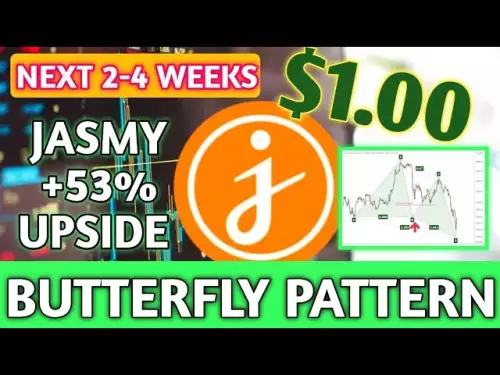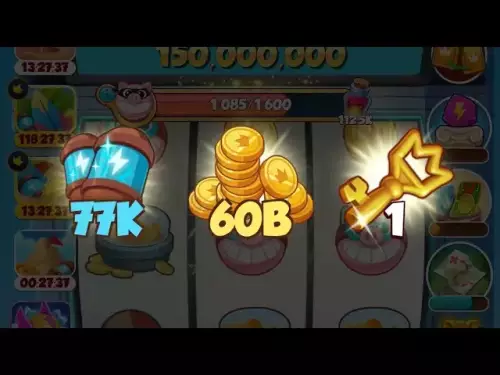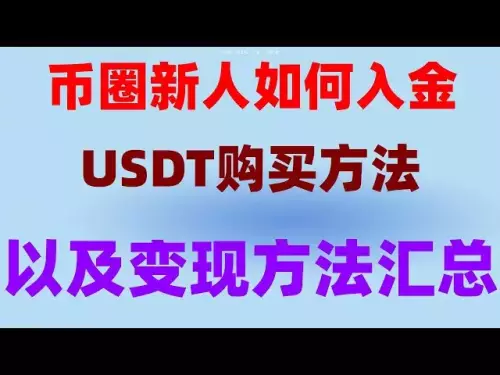-
 Bitcoin
Bitcoin $109500
-2.65% -
 Ethereum
Ethereum $4367
-7.16% -
 XRP
XRP $2.866
-4.11% -
 Tether USDt
Tether USDt $1.001
0.08% -
 BNB
BNB $834.2
-3.96% -
 Solana
Solana $186.7
-8.35% -
 USDC
USDC $0.9998
0.00% -
 TRON
TRON $0.3407
-4.70% -
 Dogecoin
Dogecoin $0.2086
-8.02% -
 Cardano
Cardano $0.8338
-6.54% -
 Chainlink
Chainlink $23.32
-8.27% -
 Hyperliquid
Hyperliquid $42.61
-6.17% -
 Ethena USDe
Ethena USDe $1.001
0.04% -
 Stellar
Stellar $0.3846
-4.40% -
 Sui
Sui $3.346
-7.20% -
 Bitcoin Cash
Bitcoin Cash $542.2
-6.29% -
 Avalanche
Avalanche $23.25
-8.12% -
 Hedera
Hedera $0.2314
-5.09% -
 UNUS SED LEO
UNUS SED LEO $9.576
-0.02% -
 Litecoin
Litecoin $109.6
-5.50% -
 Toncoin
Toncoin $3.120
-4.62% -
 Shiba Inu
Shiba Inu $0.00001198
-6.25% -
 Uniswap
Uniswap $9.635
-10.26% -
 Polkadot
Polkadot $3.731
-7.97% -
 Dai
Dai $1.000
-0.01% -
 Cronos
Cronos $0.1536
-1.37% -
 Bitget Token
Bitget Token $4.465
-3.57% -
 Monero
Monero $263.8
-3.16% -
 Aave
Aave $316.1
-8.24% -
 Ethena
Ethena $0.6228
-8.35%
Monthly MACD golden cross + weekly KDJ oversold rebound buying point
A monthly MACD golden cross combined with a weekly KDJ rebound from oversold levels signals a high-probability bullish entry in major cryptocurrencies like Bitcoin or Ethereum.
Aug 06, 2025 at 02:15 pm
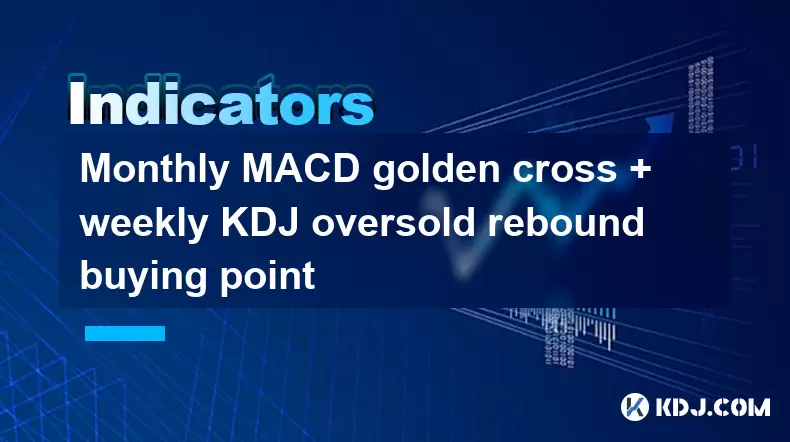
Understanding the Monthly MACD Golden Cross
The Monthly MACD Golden Cross is a significant long-term bullish signal observed when the MACD line (blue) crosses above the signal line (red) on the monthly chart. This crossover typically indicates a shift in momentum from bearish to bullish over an extended period. The MACD (Moving Average Convergence Divergence) is calculated using the 12-period and 26-period Exponential Moving Averages (EMAs), with a 9-period EMA of the MACD itself forming the signal line.
When analyzing this indicator on the monthly timeframe, traders are looking for a macro-level trend reversal. The appearance of a golden cross suggests that long-term buying pressure is beginning to dominate. This signal is especially powerful when it occurs after a prolonged downtrend in major cryptocurrencies like Bitcoin or Ethereum. The strength of the signal increases if volume expands during the crossover month, reinforcing the legitimacy of the upward momentum shift.
It's essential to confirm the golden cross with price action. For instance, if the monthly close remains above key moving averages such as the 200-month EMA, the bullish case strengthens. Traders often wait for the next monthly candle to close above the crossover point to avoid false signals caused by volatile price swings.
Weekly KDJ Indicator and Oversold Conditions
The KDJ indicator, an enhanced version of the stochastic oscillator, consists of three lines: %K (fast), %D (slow), and %J (impulse). On the weekly chart, this tool helps identify short-to-medium-term overbought or oversold conditions. When the %K line drops below 20 and the %D line follows, the asset is considered oversold, indicating potential exhaustion of selling pressure.
In the context of cryptocurrency trading, an oversold weekly KDJ reading after a sharp correction often precedes a rebound. However, being oversold does not guarantee an immediate reversal. The market can remain oversold for several weeks during strong downtrends. Therefore, traders look for additional confirmation, such as a crossover of %K above %D within the oversold zone (below 20), which signals a potential upward momentum shift.
It's crucial to align this signal with higher timeframe trends. If the monthly MACD has already formed a golden cross, a weekly KDJ rebound from oversold territory becomes a high-probability entry point. This alignment filters out noise and increases confidence in the trade setup.
Combining Monthly and Weekly Signals for Entry
To identify a high-conviction buying opportunity, traders must wait for both the monthly MACD golden cross and the weekly KDJ rebound from oversold levels to occur. This multi-timeframe confluence reduces the risk of entering during a temporary bounce within a larger downtrend.
- Check that the monthly MACD line has crossed above the signal line and remains above it for at least one full candle.
- Confirm that the weekly KDJ %K line was below 20 and has started to rise, ideally crossing above the %D line.
- Ensure that the current weekly candle is showing bullish closing patterns, such as a long lower wick or a strong green body.
- Verify that volume has increased during the weekly rebound, indicating active buying interest.
This combination works best in major cryptocurrencies with high liquidity, where technical signals are more reliable due to deeper market participation. Assets like BTC/USDT or ETH/USDT on exchanges such as Binance or Bybit are ideal for applying this strategy.
Step-by-Step Execution on a Trading Platform
Executing this strategy requires precise chart analysis and order placement. The following steps outline how to implement it on a typical trading platform:
- Open the monthly chart of your chosen cryptocurrency and apply the MACD indicator with default settings (12, 26, 9).
- Look for the MACD line (blue) crossing above the signal line (red). Note the date and price level of the crossover.
- Switch to the weekly chart and add the KDJ indicator (typically set at 9, 3, 3).
- Observe whether the %K and %D lines were below 20 in the prior week and whether they are now rising.
- Wait for the current weekly candle to show bullish confirmation, such as a close near the high of the candle.
- Place a limit buy order slightly above the weekly open but below the current price if already in motion.
- Set a stop-loss below the recent monthly swing low to protect against false breakouts.
- Use a trailing stop or fixed take-profit based on key resistance levels identified on the weekly or monthly chart.
Most platforms like TradingView or integrated exchange charts allow saving this setup as a template for quick future analysis.
Risk Management and Position Sizing
Even with strong technical confluence, risk must be strictly controlled. The volatile nature of cryptocurrencies demands disciplined position sizing. A common approach is to allocate no more than 2–5% of total capital per trade, especially when entering based on long-term signals.
- Calculate the distance between entry and stop-loss to determine risk per share.
- Divide the total risk amount (e.g., 3% of account) by the risk per unit to get position size.
- Avoid adding to the position until the weekly KDJ moves out of oversold and re-enters neutral territory (20–80).
- Monitor for divergences on the daily RSI—if price makes a new low but RSI does not, it supports the rebound thesis.
Using a hedging strategy, such as pairing the long position with a short on a correlated altcoin, can also reduce systemic risk during uncertain macro conditions.
Backtesting the Strategy
To validate the effectiveness of this approach, backtesting over historical data is essential. Select a cryptocurrency with at least five years of monthly data, such as Bitcoin.
- Identify all past instances where a monthly MACD golden cross occurred.
- For each event, check the weekly KDJ status in the following weeks.
- Record whether the price rose by at least 20% within the next 3–6 months.
- Exclude periods with major external shocks (e.g., exchange collapses, regulatory bans).
- Use tools like Python with libraries (pandas, TA-Lib) or TradingView’s built-in strategy tester.
Backtesting reveals how often the signal leads to profitable outcomes and helps refine entry rules, such as requiring a minimum volume spike or a closing price above the 50-week MA.
Frequently Asked Questions
What if the monthly MACD golden cross happens but the weekly KDJ isn’t oversold?
This scenario suggests late entry. The asset may already have rebounded significantly. Waiting for the next pullback where KDJ re-enters oversold territory aligns better with the strategy’s logic.
Can this strategy be applied to altcoins?
Yes, but only to large-cap altcoins with consistent trading volume and historical data. Low-liquidity altcoins often produce false signals due to manipulation and low participation.
How long should I hold after entering?
Hold until either a monthly MACD death cross appears or the weekly KDJ enters overbought (above 80) with signs of reversal. Time-based exits (e.g., 6 months) are less effective than technical triggers.
Is it necessary to use the exact default settings for MACD and KDJ?
Default settings (MACD: 12,26,9; KDJ: 9,3,3) are recommended for consistency across markets. Adjusting them may increase sensitivity but also raise the risk of false signals.
Disclaimer:info@kdj.com
The information provided is not trading advice. kdj.com does not assume any responsibility for any investments made based on the information provided in this article. Cryptocurrencies are highly volatile and it is highly recommended that you invest with caution after thorough research!
If you believe that the content used on this website infringes your copyright, please contact us immediately (info@kdj.com) and we will delete it promptly.
- Heritage Distilling's Token Deal: A Bold Balance Sheet Strategy
- 2025-08-26 06:45:14
- Coinbase Hack, Solana Shenanigans, and Wallet Woes: What's a Crypto OG to Do?
- 2025-08-26 06:45:14
- Bitcoin, Institutional Adoption, and Volatility: A 2025 Perspective
- 2025-08-26 08:05:14
- MAGACOIN, Ethereum, and XRP Growth: What's the Buzz?
- 2025-08-26 08:30:13
- ETHZilla's Bold Moves: Share Buyback and Ethereum Holdings Under Scrutiny
- 2025-08-26 08:05:14
- Cardano, ADA Price, and the ETH L2 Meme Coin Frenzy: What's Next?
- 2025-08-26 08:50:13
Related knowledge
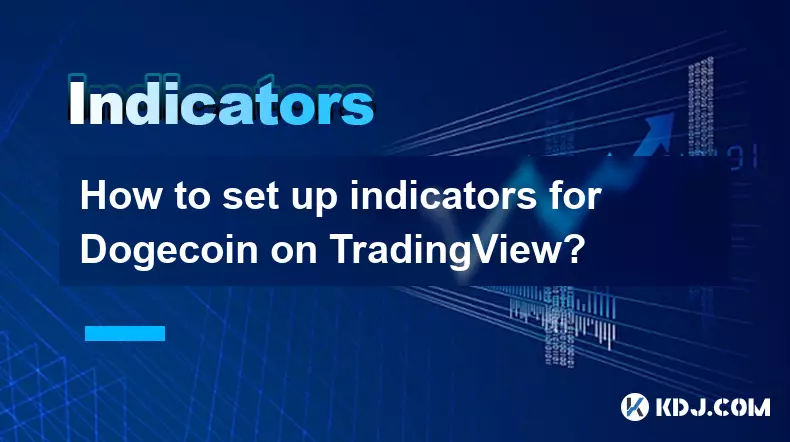
How to set up indicators for Dogecoin on TradingView?
Aug 25,2025 at 04:23pm
Understanding Dogecoin and TradingView1. Dogecoin, initially created as a meme-based cryptocurrency, has evolved into a widely traded digital asset. I...

What does it mean when the +DI and -DI cross frequently in the DMI indicator but the ADX is flattening?
Aug 11,2025 at 03:15am
Understanding the DMI Indicator ComponentsThe Directional Movement Index (DMI) is a technical analysis tool composed of three lines: the +DI (Positive...

What does the sudden appearance of a "dark cloud cover" candlestick pattern during an uptrend indicate?
Aug 13,2025 at 11:35am
Understanding the 'Dark Cloud Cover' Candlestick PatternThe dark cloud cover is a bearish reversal pattern in technical analysis that typically appear...

What does it mean when the moving average, MACD, and RSI all send buy signals simultaneously?
Aug 11,2025 at 01:42pm
Understanding the Convergence of Technical IndicatorsWhen the moving average, MACD, and RSI all generate buy signals at the same time, traders interpr...

What does it mean when both the KDJ indicator and the RSI show overbought signals simultaneously?
Aug 13,2025 at 11:35am
Understanding the KDJ Indicator in Cryptocurrency TradingThe KDJ indicator is a momentum oscillator derived from the Stochastic Oscillator, widely use...

What does it mean when the price is trading above the SAR indicator but the red dots are densely packed?
Aug 09,2025 at 11:49pm
Understanding the SAR Indicator and Its Visual SignalsThe SAR (Parabolic Stop and Reverse) indicator is a technical analysis tool used primarily to de...

How to set up indicators for Dogecoin on TradingView?
Aug 25,2025 at 04:23pm
Understanding Dogecoin and TradingView1. Dogecoin, initially created as a meme-based cryptocurrency, has evolved into a widely traded digital asset. I...

What does it mean when the +DI and -DI cross frequently in the DMI indicator but the ADX is flattening?
Aug 11,2025 at 03:15am
Understanding the DMI Indicator ComponentsThe Directional Movement Index (DMI) is a technical analysis tool composed of three lines: the +DI (Positive...

What does the sudden appearance of a "dark cloud cover" candlestick pattern during an uptrend indicate?
Aug 13,2025 at 11:35am
Understanding the 'Dark Cloud Cover' Candlestick PatternThe dark cloud cover is a bearish reversal pattern in technical analysis that typically appear...

What does it mean when the moving average, MACD, and RSI all send buy signals simultaneously?
Aug 11,2025 at 01:42pm
Understanding the Convergence of Technical IndicatorsWhen the moving average, MACD, and RSI all generate buy signals at the same time, traders interpr...

What does it mean when both the KDJ indicator and the RSI show overbought signals simultaneously?
Aug 13,2025 at 11:35am
Understanding the KDJ Indicator in Cryptocurrency TradingThe KDJ indicator is a momentum oscillator derived from the Stochastic Oscillator, widely use...

What does it mean when the price is trading above the SAR indicator but the red dots are densely packed?
Aug 09,2025 at 11:49pm
Understanding the SAR Indicator and Its Visual SignalsThe SAR (Parabolic Stop and Reverse) indicator is a technical analysis tool used primarily to de...
See all articles





















